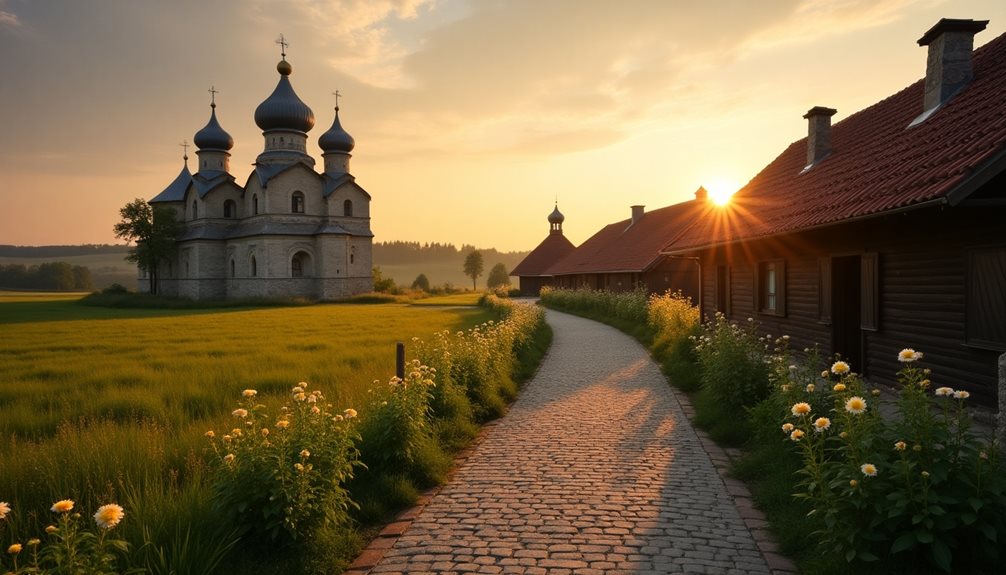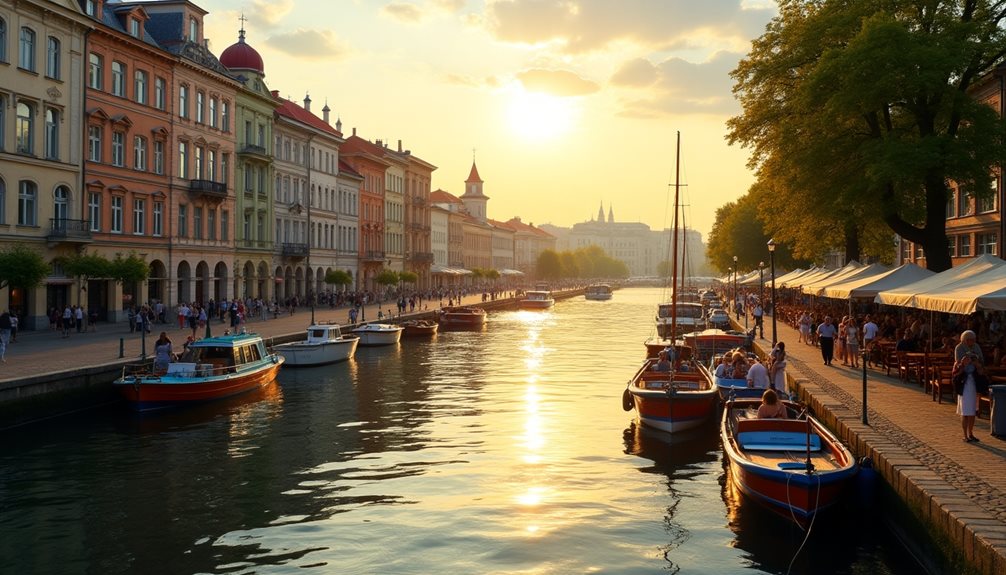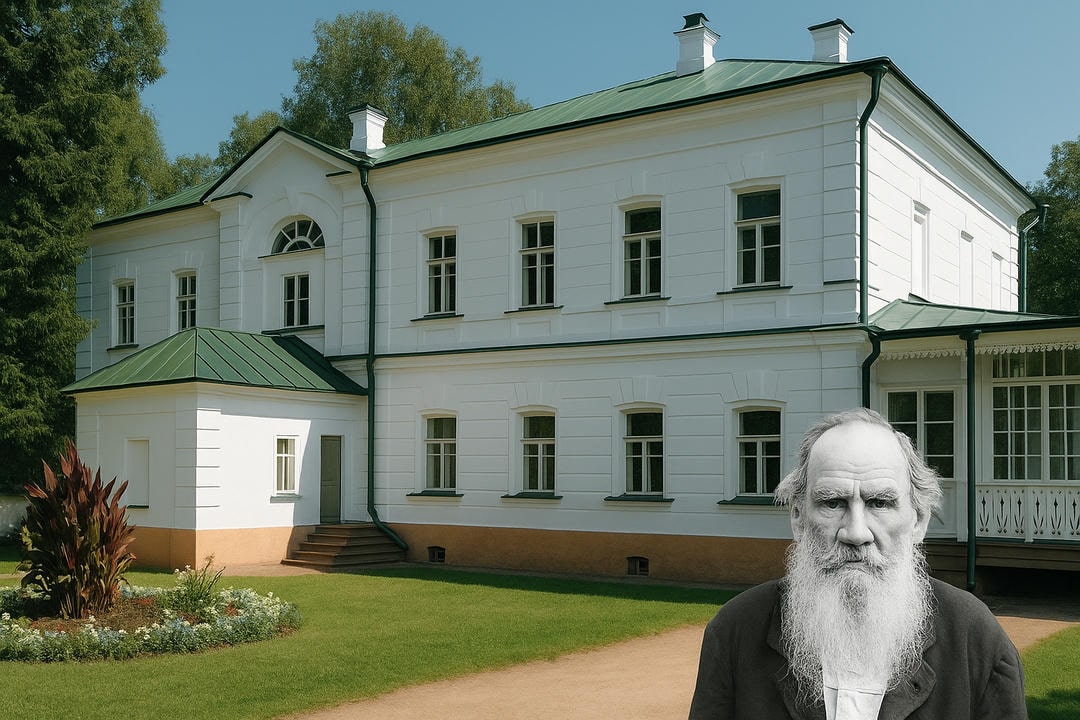The Pskov Region, steeped in history since the 9th century, stands as a demonstration to the complex interplay of Baltic, Scandinavian, and Slavic influences. Its strategic position at the confluence of pivotal trade routes has not only shaped its cultural landscape but also fortified its role in the annals of Russian statehood. With its remarkable medieval architecture and enduring traditions, Pskov offers a unique glimpse into the resilience of its people. Yet, how has this ancient land continued to influence modern Russian life, and what secrets does its storied past still hold?
Historical Significance of Pskov

Pskov’s historical significance is rooted in its strategic location and enduring legacy as a pivotal center in Russian history. Situated near trade routes and borders, Pskov emerged as a vital nexus for commerce and defense.
Its ancient settlements, dating back to the 9th century, underscore Pskov’s role as a cradle of Russian civilization. These settlements reveal a mosaic of cultural exchange and resilience, marking Pskov as an influential player in medieval geopolitics.
Historical artifacts unearthed in the region, such as pottery, tools, and manuscripts, provide tangible evidence of its vibrant past. Such discoveries not only highlight Pskov’s cultural richness but also its capacity for renewal and adaptation, essential attributes for a society aspiring towards autonomy and self-determination.
Architectural Marvels
The historical significance of Pskov is mirrored in its architectural marvels, which stand as a representation of the region’s rich cultural and political legacy.
Pskov architecture is characterized by its robust medieval fortifications, particularly the Pskov Krom (Kremlin) and its encompassing walls, which reveal the strategic ingenuity of ancient builders. These structures demonstrate a unique blend of military necessity and aesthetic appeal, with their imposing stonework designed to withstand sieges while also symbolizing Pskov’s status as a formidable power.
The Trinity Cathedral, with its iconic whitewashed walls and golden domes, further exemplifies the region’s architectural prowess. Together, these edifices not only embody the resilience and creativity of their creators but also invite modern observers to reflect on the enduring quest for freedom and security.
The Pskov Region: A Cultural Cornerstone

The Pskov region is a vibrant reflection of its historical role as a crossroads of diverse civilizations. Over the centuries, it has served as a pivotal point for cultural exchange, shaped by interactions with Baltic, Scandinavian, and Slavic peoples.
This rich tapestry of influences is evident in Pskov’s artistic heritage, characterized by unique architectural styles and iconography that blend Byzantine and Gothic elements. The region’s artistic output, including renowned silverwork and intricate embroidery, showcases a synthesis of techniques and motifs from various cultures.
Pskov’s folklore, filled with stories of freedom and resilience, further highlights the enduring impact of this cultural intermingling. As a result, the region’s cultural landscape exemplifies the dynamic interplay of historical influences.
Celebrating Modern Traditions
Today, the Pskov region embraces its storied past while celebrating a lively array of modern traditions that reflect its unique identity.
Strategic Location Impact

Nestled between the East European Plain and the Baltic Sea, the Pskov region boasts a strategic location that has historically served as a vital hub for trade and military activities. This area has long been a crossroads for various cultures and economies, facilitating vibrant exchanges that have contributed to its prosperity.
The Pskov region’s proximity to key trade routes, such as those established by the Hanseatic League, has significantly enhanced economic interactions between Western Europe and Russia. This connectivity has fostered regional development, allowing local communities to thrive through commerce and cultural exchange.
Pskov’s historical role as a defensive stronghold is noteworthy. The region is home to impressive fortresses and walled cities that were essential in safeguarding the Russian heartland from various threats. These structures not only symbolize resilience but also reflect the ingenuity of past generations in protecting their homeland.
The military importance of Pskov has evolved over time, adapting to changing geopolitical landscapes. This adaptability has allowed the region to serve as a protective buffer, contributing to its enduring legacy as a place of strength and stability.
Today, folk festivals serve as a vibrant demonstration of this cultural continuity, where ancient customs meet contemporary expressions. Annual events like the Pskov Khorovod highlight traditional dances, culinary favorites, all which offer a space for communal connection and cultural preservation.
Together, these traditions offer a sense of freedom through cultural expression and community unity.




